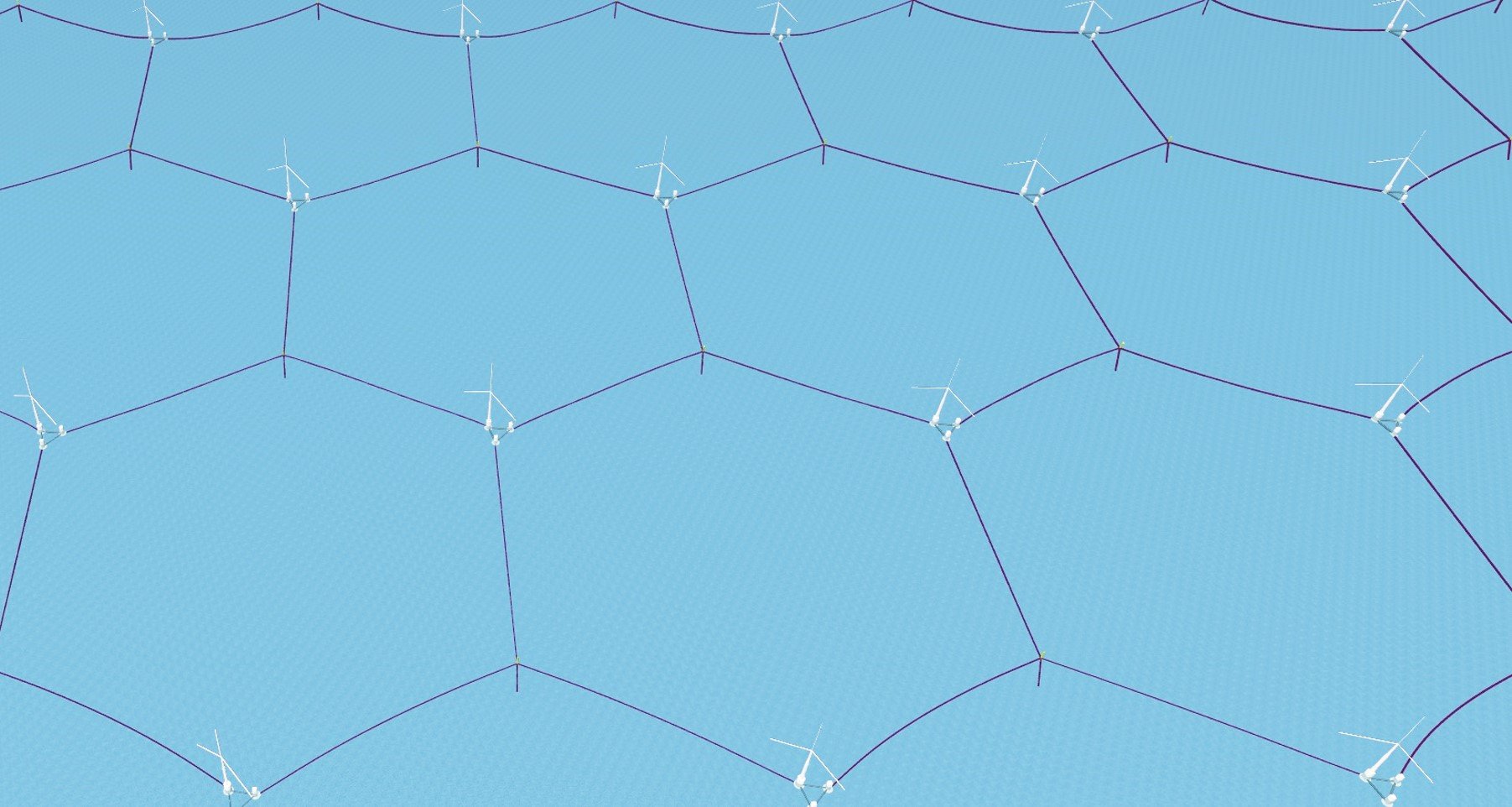A key advantage of floating wind farms compared to bottom-fixed variants is that it expands the number of places you can set up new wind farms. This creates new and exciting opportunities.
When studying a map illustrating wind resources, you will find that the colors are always darker further offshore. In other words, there is more wind where the waters are deeper. Winds blow more vigorously, and they are also more consistent. As it is possible to install floating wind turbines further offshore, they can harness wind powers that are stronger and more consistent than the bottom-fixed versions. Thus, the floating wind turbines generate more power. The bottom-fixed wind turbines must be placed closer to the shoreline in shallow waters in areas with less wind - and perhaps more conflicts of interest.
The energy-potential increases with wind velocity
The energy potential of a wind turbine increases with wind speeds to the power of three. In theory, you can harvest twice as much energy from the same rotor size in a floating site (average wind velocity, e.g., 12.6m/s) compared to a bottom-fixed site (average wind velocity of ten m/s). However, doubling the power output would require bigger generators attached to the equal-sized rotors at the floating location. Even when considering this, the economics are exciting when the full theoretical potential for floating wind is taken into account. Of course, twice as much energy would mean twice as much income from an equal-sized windfarm.
Read more: Why Honeymooring is the solution for future wind farms
The area cost is critical
We furthermore believe the cost of the area used for energy production will increase dramatically in the future. On the other hand, hardware costs will probably continue to decrease significantly. Consequently, the area cost emerges as a critical part of the Levelized Cost Of Energy calculation. Thus, with a relatively high area cost, producing more energy for every square kilometer makes even more economic sense.
In addition, the wind farm- localization nearshore will, in most cases, be more expensive, partly because of conflicting interests. In conclusion, most floating offshore wind farms will offer: Significantly higher density energy per occupied area at sites with a lower cost than most bottom-fixed wind farm sites.
Less conflict of interest and public attention
The flexibility in the localization of the offshore floating wind farms also means that they can be localized in areas with less conflict of interest. There is a much higher risk of conflict in shallow waters, and nearshore. The same space might be a vital fishing ground, used by the oil and gas industry for essential power trunks, or constitutes an important transport fairway. You can avoid this altogether by using floating offshore turbines in less conflicted areas.
This also attracts less public interest because the wind farm is placed out of sight. Thus, you do not have to deal with visual and auditory pollution problems. No noise or blinking lights are vital as the public does not respond well to noise or flashing lights. Furthermore, there are generally fewer birds further ashore at typical floating wind farm locations, making it less likely that the wind turbines injure birds.
No frequent high vibrations during installation
Another positive aspect of floating wind farms is that installing the turbines does not create powerful high-frequency vibrations. When installing a bottom fixed wind turbine, a colossal steel pipe with a diameter of about 10 meters is knocked 20-30 meters down into the ground. This process goes on for hours and can be detrimental to fish and other marine life. It is possible to create a noise-reducing curtain with air bubbles to prevent this. This is a costly solution, but it contributes to protecting marine life.
A bottom-fixed wind turbine also experiences more frequent vibrations than a floating wind turbine because they vibrate at a higher frequency when fixed to the seabed. The wind turbine generator is sensitive to high-frequency vibrations and is the most expensive part of a wind turbine. The lower frequency vibrations at a floating wind turbine prolong its working life.
Standardization is a deal-breaker
The water depth and seabed will vary in a wind farm consisting of bottom-fixed wind turbines in shallow waters. You will be forced to use different designs of the foundations. In floating wind farms, you can use the same floater design everywhere. Standardization means scalability and lower costs per kilo structure. It is cheaper to manufacture, transport, install and decommission 100 of the same products than 100 products with 20 different designs.
An even more important consequence is that the installation process can go much faster. This enables installing a more extensive farm during only one summer season. This is not possible without standardization. Cutting the installation time from two to one summer season would give a massive economic gain for a wind farm.
Semar is currently collaborating with DOF, Aker, and Equinor to install the world's largest offshore floating wind farm at Hywind Tampen. This gives us unique insights into the premiss for an up-scaled installation process of offshore big floating wind farms. We have experienced the importance and implications of scalability firsthand.
Unleashing the potential of future floating wind farms
Semar's new solution for mooring floating wind farms called Honeymooring is being developed to dramatically increase the scalability and cost-competitiveness of floating offshore wind farms.
Read more: How Honeymooring eliminates seabed damage and improves environmental profiles
Semar performed a pre-study supported by Innovation Norway, TotalEnergies Norway, and Equinor Energy, confirming that Honeymooring offers significant cost savings compared to traditional mooring systems. The technical part of the pre-study did not identify any critical technical obstacles.
Do you want to know more about the benefits of using Honeymooring in future floating wind farms?




.jpg)
